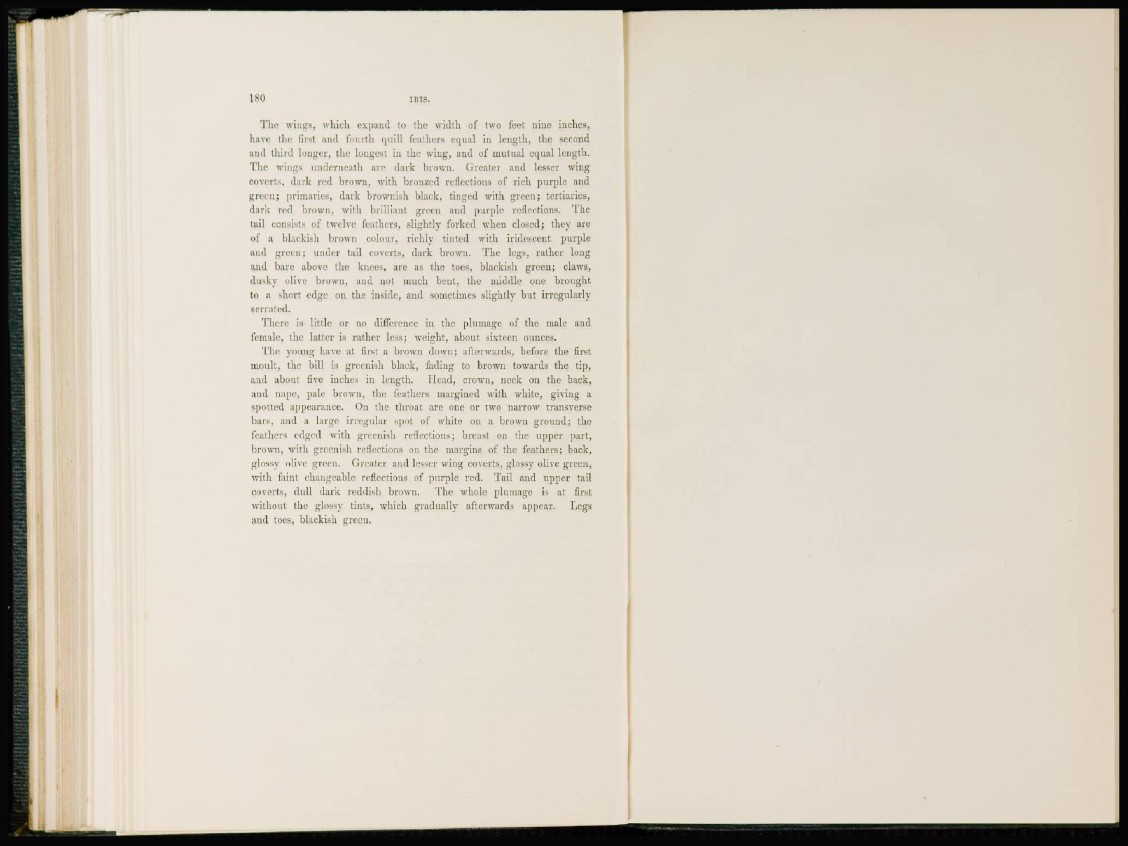
180 IRIS.
The wings, which expand to the width of two feet nine inches,
have the first and fourth quill feathers equal in length, the second
and third longer, the longest in the wing, and of mutual equal length.
The wings underneath are dark brown. Greater and lesser wing
coverts, dark red brown, with bronzed reflections of rich purple and
green; primaries, dark brownish black, tinged with green; tertiaries,
dark red brown, witli brilliant green and purple reflections. The
tail consists of twelve feathers, slightly forked when closed; they are
of a blackish brown colour, richly tinted with iridescent purple
and green; under tail coverts, dark brown. The legs, rather long
and bare above the knees, are as the toes, blackish green; claws,
dusky olive brown, and not much bent, the middle one brought
to a short edge on the inside, and sometimes slightly but irregularly
serrated.
There is little or no difference in the plumage of the male and
female, the latter is rather less; weight, about sixteen ounces.
The young have at first a brown down; afterwards, before the first
moult, the bill is greenish black, fading to brown towards the tip,
and about five inches in length. Head, crown, neck on the back,
and nape, pale brown, the feathers margined with white, giving a
spotted appearance. On the throat are one or two narrow transverse
bars, and a large irregular spot of white on a brown ground; the
feathers edged with greenish reflections; breast on the upper part,
brown, with greenish reflections on the margins of the feathers; back,
glossy olive green. Greater and lesser wing coverts, glossy olive green,
with faint changeable reflections of purple red. Tail and upper tail
coverts, dull dark reddish brown. The whole plumage is at first
without the glossy tints, which gradually afterwards appear. Legs
and toes, blackish green.